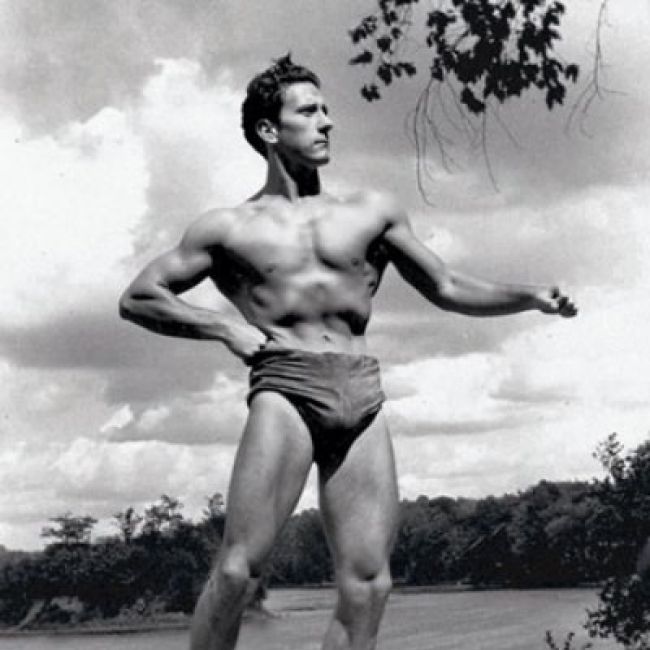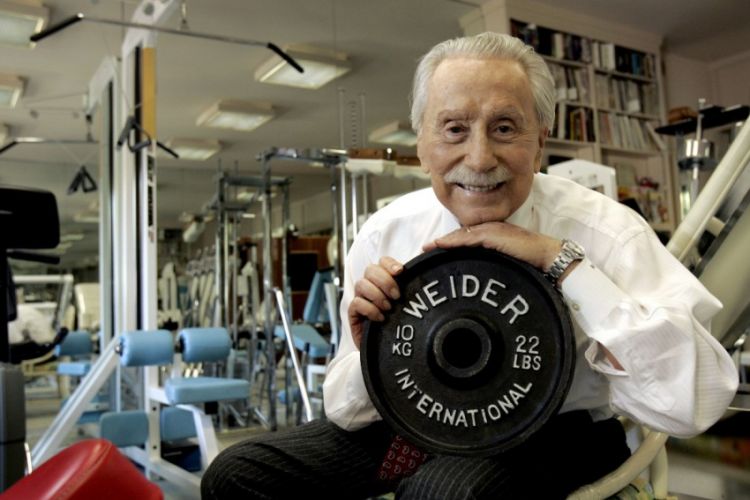Who is Joe Weider?
The Master Blaster, also known as Joseph “Joe” Weider, was a well-known Canadian bodybuilder, businessman, and author. Mr. and Ms. Olympia were created by him, and he published several well-known fitness periodicals in addition to being the co-founder of the IFBB.
Short Career of Joe Weider
Joe Weider, who was raised in a low-income household, had witnessed how his lifelong efforts had helped popularize the term “bodybuilding.”
He and his brother Ben established a fitness empire over the 1950s, 1960s, 1970s, 1980s, and 1990s by launching several prosperous supplement businesses and planning the largest bodybuilding competitions in the world.
The greatest way to sum up Joe’s significance in bodybuilding is to quote his friend Arnold Schwarzenegger. Arnold said the following in a tribute to Joe:
“I heard about Joe Weider long before I met him—he was the fitness pioneer who admonished us all to “Be Somebody with a Body.” He instilled in us the belief that anyone can achieve greatness with dedication and practice.
At the age of 92, Joe Weider passed away in 2013, leaving behind a legacy that will be “forever inscribed” in the annals of bodybuilding.
“Those who are humble and ambitious are destined for success.”
Body Measurements of Joe Weider
| Full Name: | Joseph Joe Weider |
| ALIAS: | The Master Blaster |
| ERA: | 1940, 1950, 1960, 1970, 1980, 1990, and 2000 |
| PROFESSION: | Bodybuilder, Entrepreneur, Author |
| NATIONALITY: | Canadian |
| WEIGHT: | 175 – 185lbs (79.4 – 83.9kg) |
| HEIGHT: | 5’10” (177.5cm) |

Accomplishments
- Entrepreneur – Bodybuilding equipment company, Supplement company, Worldwide bodybuilding federation founder, Magazine owner
- Bodybuilding icon
- Author
Biography
Small Steps in the Right Direction
Joseph “Joe” Weider, one of four children, was raised in Montreal, Canada, by Polish-Jewish parents.
Joe had to drop out of school after the seventh grade to help support his family since his parents couldn’t afford it. Due to his “fragile” appearance, he was also bullied by his neighbors during this time.
Joe had a difficult beginning to life due to these sad events, but he didn’t let them stop him from pursuing his goals.
Joe decided to start weightlifting in 1940 so that he could build up his strength. He built a set of barbells in his family’s garage using a pair of shattered vehicle wheels and axles.
Entrepreneurship
He spent months writing it on his mother’s kitchen table, and that same year he released his first fitness magazine.
This is when his love for business and bodybuilding first “emerged.” After releasing his first magazine, Joe started working with his brother to launch his new sports nutrition business and started developing his training materials.
However, back then, bodybuilding wasn’t very common; in fact, it was kind of a “taboo” subject. As a result, Joe found it challenging to attract new clients and establish himself in the media.
Nevertheless, he was committed to bringing attention to the sport and making it more widely accepted.
“Before, the rest of the world ignored us bodybuilders, but suddenly, bodybuilding was gaining the respect it deserves.”
“Revolution” in Bodybuilding
Joe’s vision of making bodybuilding more widely known quickly came to pass. After his brother, Ben returned from his service in the Canadian army, his business began to expand significantly.
The two brothers “joined forces” at that time and got to work growing their sports nutrition and personal training businesses.
When they established their bodybuilding federation and held the first-ever Mr. Canada competition, they went a step further in 1946.
From that point forward, Joe and Ben kept expanding their bodybuilding legacy through their writings and publications, which included some of the most well-known fitness publications that are still read today.
Joe stayed faithful to his passion for bodybuilding throughout this entire time, maintaining fantastic shape and inspiring more and more individuals to enter the previously obscure field of bodybuilding.
Working with Schwarzenegger, and Mr. Olympia
The brothers founded the Mr. Olympia bodybuilding competition in 1965, and it has since developed into one of the biggest yearly sporting occasions in the entire globe. But at the time, their primary objective was to outdo the NABBA’s, Mr. Universe.
Arnold Schwarzenegger, a former bodybuilder, actor, and California governor started working with Joe around this time.
Arnold first gained notoriety after Joe obtained his first acting part in Hercules in New York, which was unknown to the bodybuilding community at the time (1969).
He also competed in Joe’s Mr. Olympia for the first time that year, placing second to the legendary Cuban wrestler Sergio Oliva.
Eleven years later, Ms. Olympia was added to the calendar of important bodybuilding competitions by Joe and his brother Ben.
Legal Concerns
Due to the label claims on his products, Joe occasionally ran into issues with the Federal Trade Commission (FTC) in the 1970s and the early 1980s. As a result, he was obliged to retract some of the assertions that people believed to be false, which ultimately reduced his company’s profits.
Joe nevertheless managed to earn hundreds of millions of dollars from his supplement businesses despite the difficulties.
Making Legends
By 1981, Joe Weider had established himself as a legend in the bodybuilding community.
He and Ben co-authored the well-known book “The Weider System of Bodybuilding” that year, which they advertised through their publications. The brothers sold their magazine companies for an astounding 357 million dollars in 2003.
Joe received the Lifetime Achievement Award from the Venice Muscle Beach Hall of Fame in 2006 from none other than his protege Arnold Schwarzenegger.
Arnold claimed that Joe introduced him to the bodybuilding industry and gave him the motivation to travel to America to pursue his aspirations.
A few months later, the Young Men’s Hebrew Association gave Joe and his brother another honor for their significant contributions to bodybuilding.
Death
Heart failure caused Joe Weider’s death on March 23, 2013, at the age of 92. Lydia, his daughter, and his wife Betty Weider are still alive.
Training
Millions of individuals use Joe’s renowned training methods in the gym because of his notoriety. Here is a rundown of his five most well-liked training tenets, along with an explanation.
The Principle of Forced Repetition
This method entails completing the set to failure, followed by a few additional reps with assistance from a spotter. Muscles are forced into new growth by being worked past their point of failure in this manner.
The Fundamentals of Muscle Pre-Exhaustion
In Joe’s Pre-Exhaustion approach, a muscle is first trained with an isolated exercise before progressing to compound multi-joint movements later in a workout.
The idea behind this technique is to initially exhaust a specific muscle so that when multi-joint exercises are performed later, the muscle can more easily withstand stress.
The Muscle Confusion Principle
In this one, Joe promoted varying workout parameters such as rest intervals, repetition count, weight, location, and even training frequency.
This principle’s underlying tenet is to prevent muscle adaptation, which will lead to more hypertrophy.
The Principle of Muscle Priority
Training the weaker muscular parts first, when the body is not exhausted, is the basic tenet of this theory.
In the end, this enables the muscles to be worked out more intensely and with bigger weights, which promotes superior muscle growth.
The Principle of Partial Reps
Joe frequently advocated performing partial reps rather than the entire range of motion in the event of an injury.
He thought that partial repetitions may provide the same muscular response and general growth as a typical full-motion repetition.
Numerous studies that showed persons who followed this approach saw the same increases in strength and size as those who did not corroborate this.
Joe’s Workout for Mass Building
For newcomers:
Monday/Thursday:
- Incline Sit Ups, 2-3 x 15-20
- Bench Presses, 6 x 15-5
- Barbell Bent Rows, 6 x 15-5
- Standing Barbell Presses, 5 x 12-5
- Seated Calf Raises, 5 x 15-6
- Barbell Reverse Curls, 3 x 10-6
- Barbell Wrist Curls, 3 x 10-15
Tuesday/Friday:
- Hanging Leg Raises, 2-3 x 10-15
- Squats, 6 x 15-5*
- Stiff Leg Deadlifts, 4 x 12-6*
- Standing Barbell Curls, 4 x 12-6*
- Close Grip Bench Presses, 4 x 12-6*
- Standing Calf Raises, 5 x 15-6*
After three months of doing this program, Joe suggested moving to his more advanced routine. It looks like this;
Monday/Thursday:
- Incline Sit Ups, 3-4 x 15-20
- Incline Barbell Presses, 6 x 15-5
- Weighted Dips, 4 x 12-6
- Seated Pulley Rows, 6 x 15-5
- Front Lat Pulldowns, 4 x 12-6
- Seated Machine Front Presses, 5 x 12-5
- Barbell Upright Rows, 3 x 10-6
- Seated Calf Raises, 6 x 15-6
- Barbell Reverse Curls, 4 x 10-5
- Barbell Wrist Curls, 4 x 10-15
Tuesday/Friday:
- Hanging Leg Raises, 3-4 x 10-15
- Squats, 6 x 15-5
- Angled Leg Presses, 5 x 12-5
- Stiff-Legged Deadlifts, 5 x 12-5
- Lying Leg Curls, 3 x 10-6
- Barbell Preacher Curls, 5 x 15-6
- Close-Grip Bench Press, 5 x 15-6
- Standing Calf Raises, 5 x 15-6
Nutrition
Joe has always held the view that the most crucial aspect of bodybuilding is food. Diet is 75% of the battle, he once said.
Here are some of his recommendations for a healthy bodybuilding diet.
Joe Weider’s Dieting Do’s and Dont’s
Do
1. “Eat a little protein at each meal. Eat beef, fish, poultry, eggs, and milk products. Your body can digest and assimilate only 30 grams of protein per feeding, so you needn’t eat huge protein meals.”
2. “Eat fresh fruits and vegetables, all as close to being raw as possible.”
3. “Eat a little vegetable fat in the form of seeds and nuts for skin and nerve health.”
4. “Eat a chelated multiple-mineral and multiple-vitamin supplement with each meal.”
5. “Eat with as much variety as possible.”
6. “Eat at least three meals per day. Small meals are digested and utilized more efficiently by the body.”
7. “Drink plenty of pure water.”
Don’t
1. “Eat junk foods, which are highly processed, fried, or full of sugar and white flour.”
2. “Drink soft drinks or alcoholic beverages.”
3. “Use too much salt or other seasonings.”
Influences and Idols
For the majority of his several-decade “reign,” Joe had to be his inspiration to accomplish everything he did.
Joe always saw the greater picture whenever he encountered a challenge in life, and he overcame whatever stood in his way. One of the factors contributing to his huge success in the bodybuilding community and elsewhere is this.
What Joe Weider Can Teach Us?
Joe had a difficult beginning in his life, having to drop out of school at the age of 12 to support his family.
His admirable outlook and character have enabled him to grow after these trying experiences and ultimately become stronger. These challenging periods molded him into a great legend in the bodybuilding industry.
If Joseph Weider can teach us anything, it’s to never give up on our dreams. His experience serves as evidence that, with the appropriate mindset, practically nothing is insurmountable in life.
Keep moving forward and use this phrase from Joe as inspiration to accomplish your life’s goals;
“Aim higher than yourself, love your friend, speak the truth, be faithful, and honor your parents. Strive for perfection.
You may master yourself with the help of these ideas, which will also make you strong, and hopeful, and set you on the road to greatness. Josef Weider
